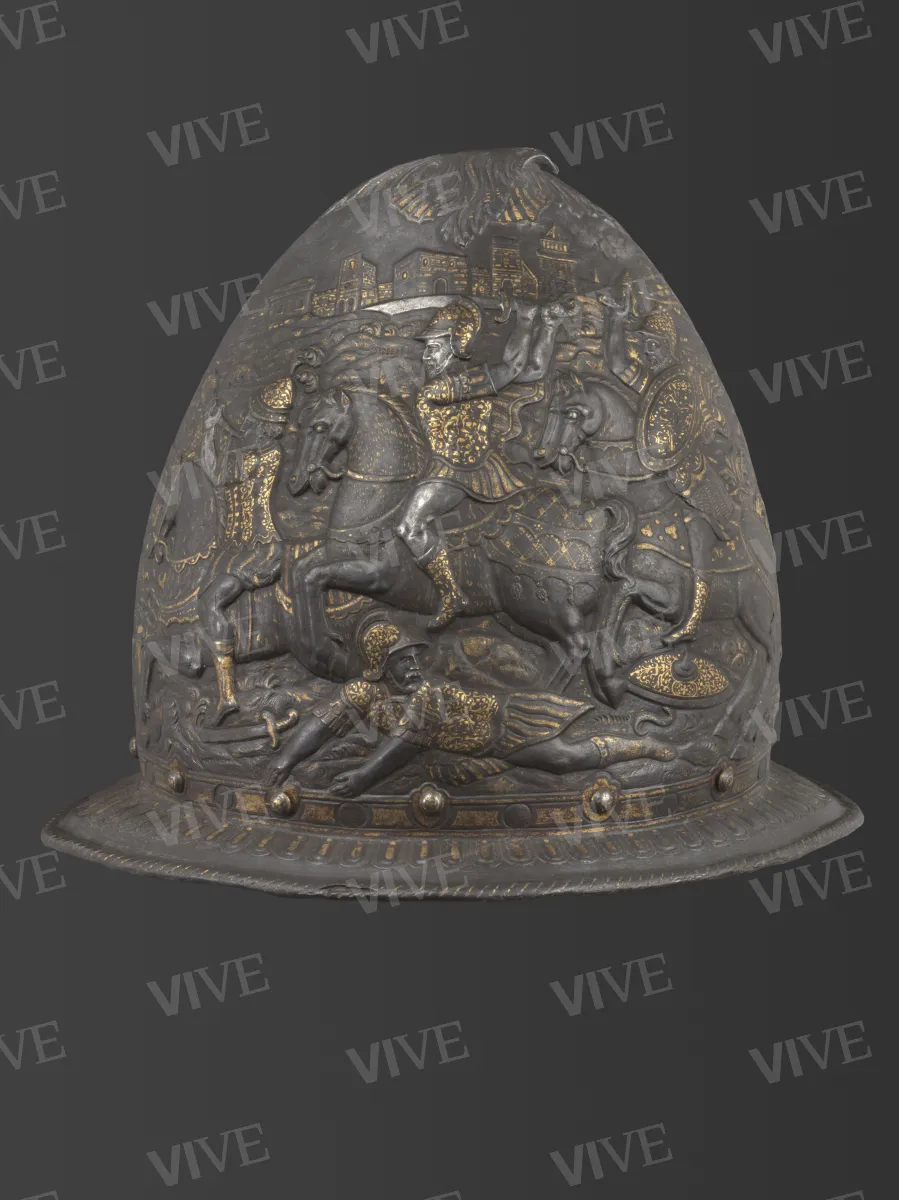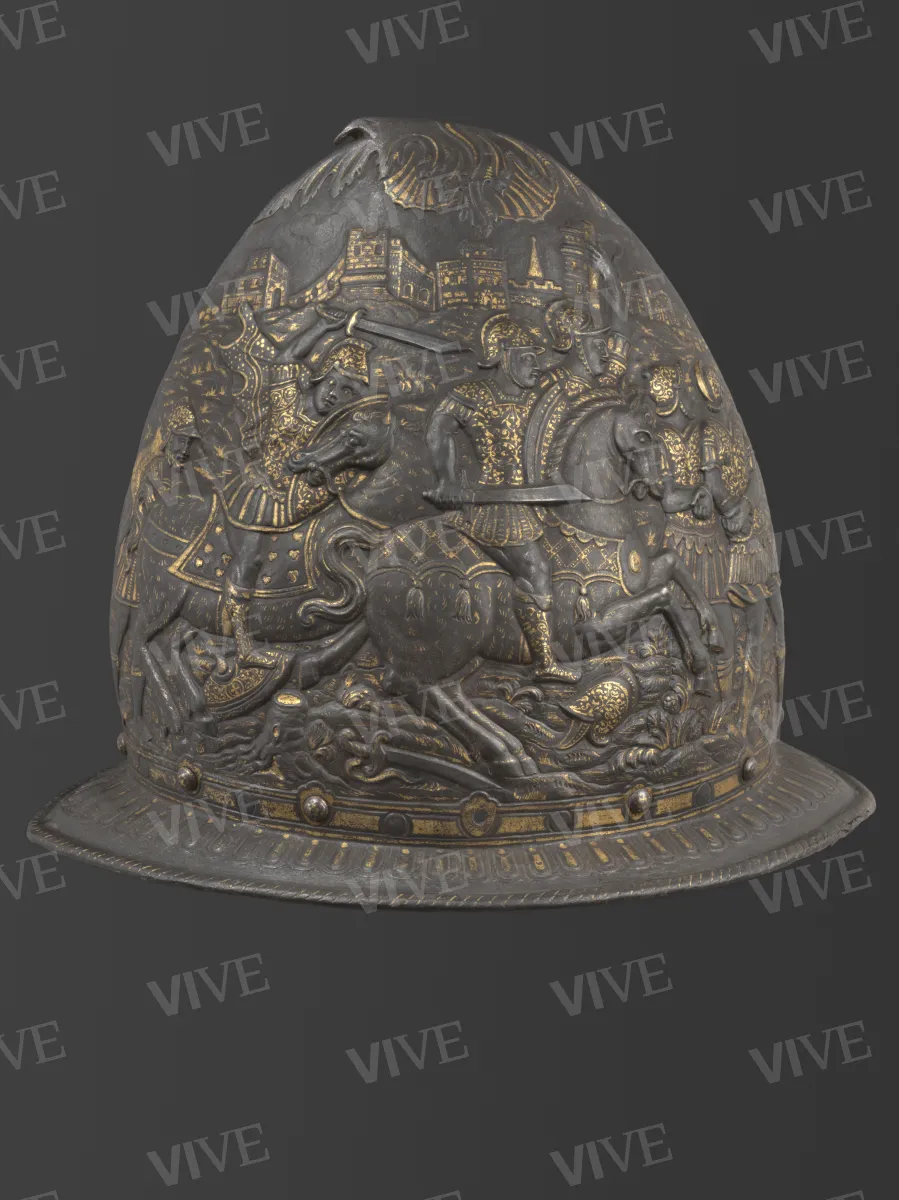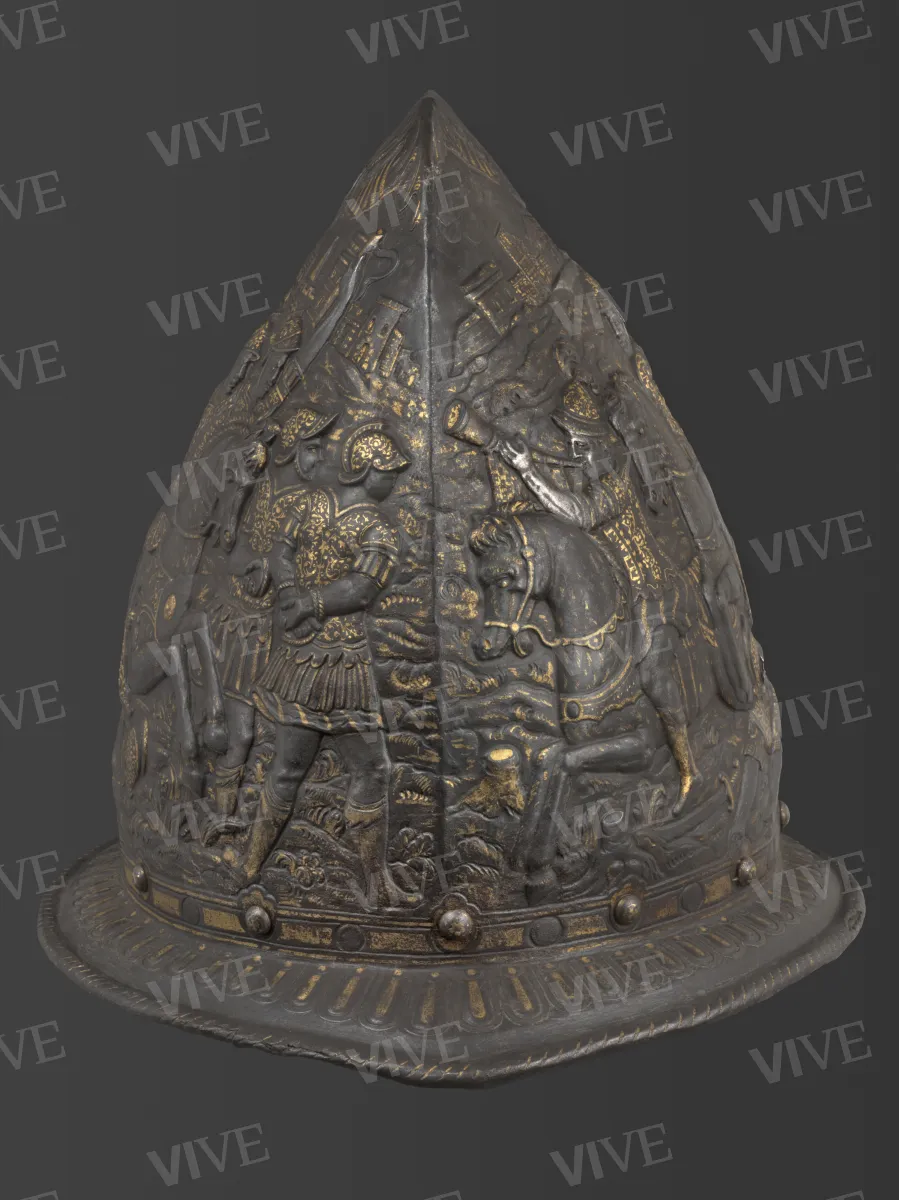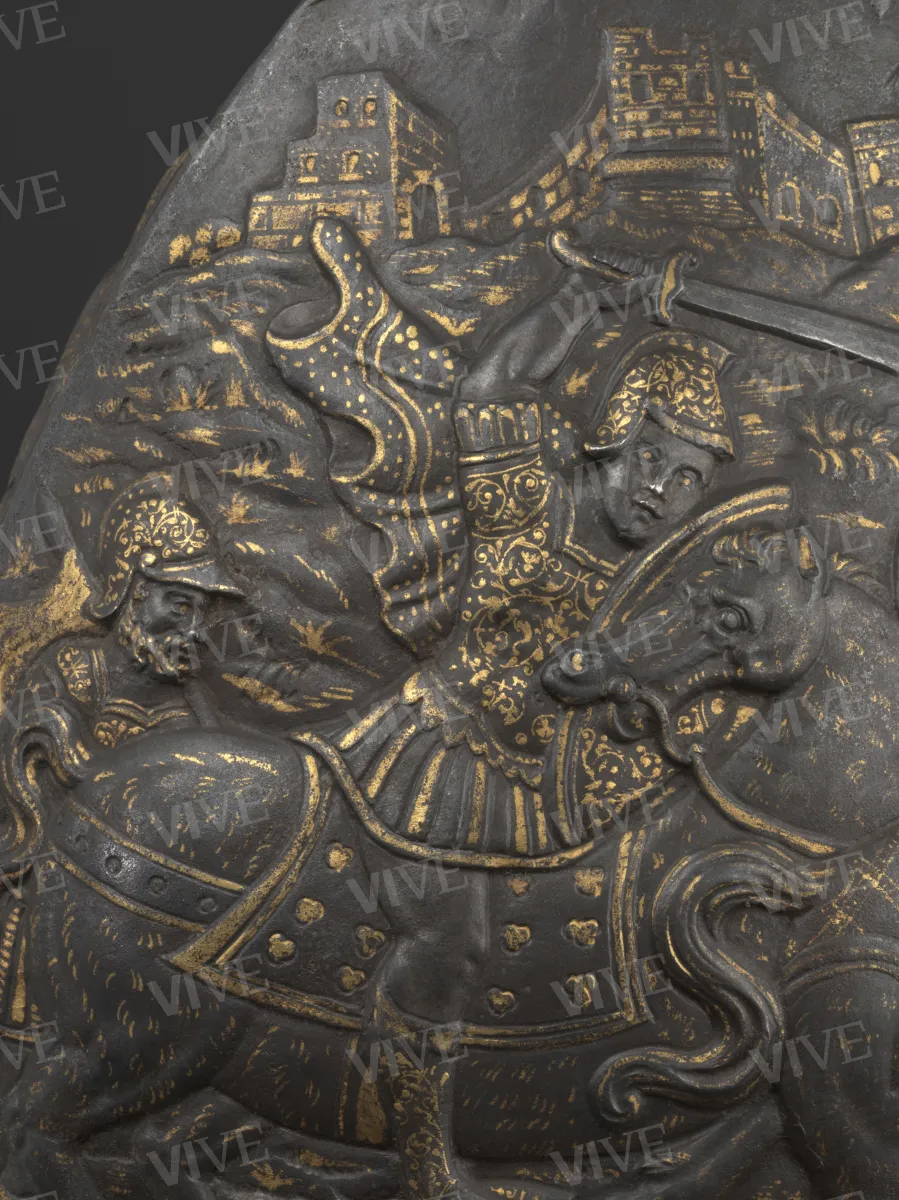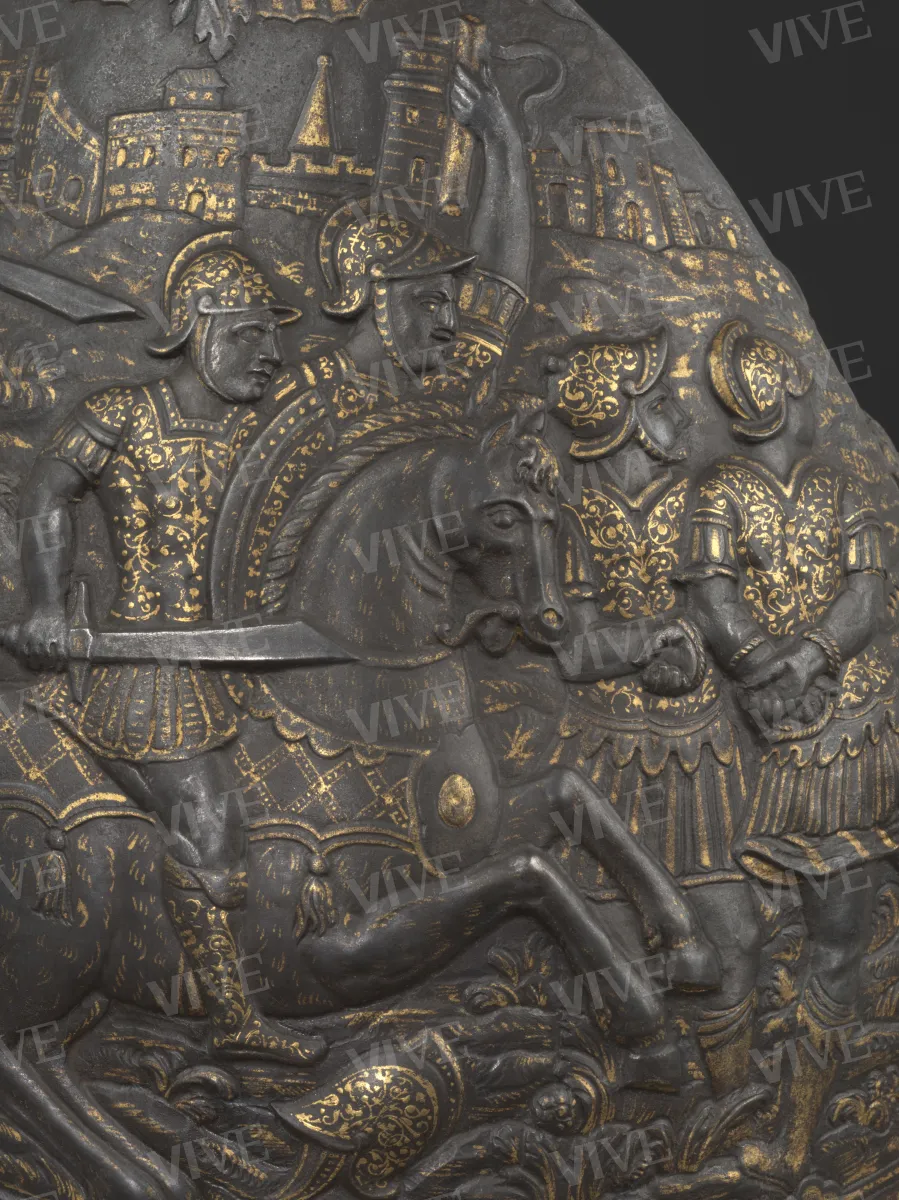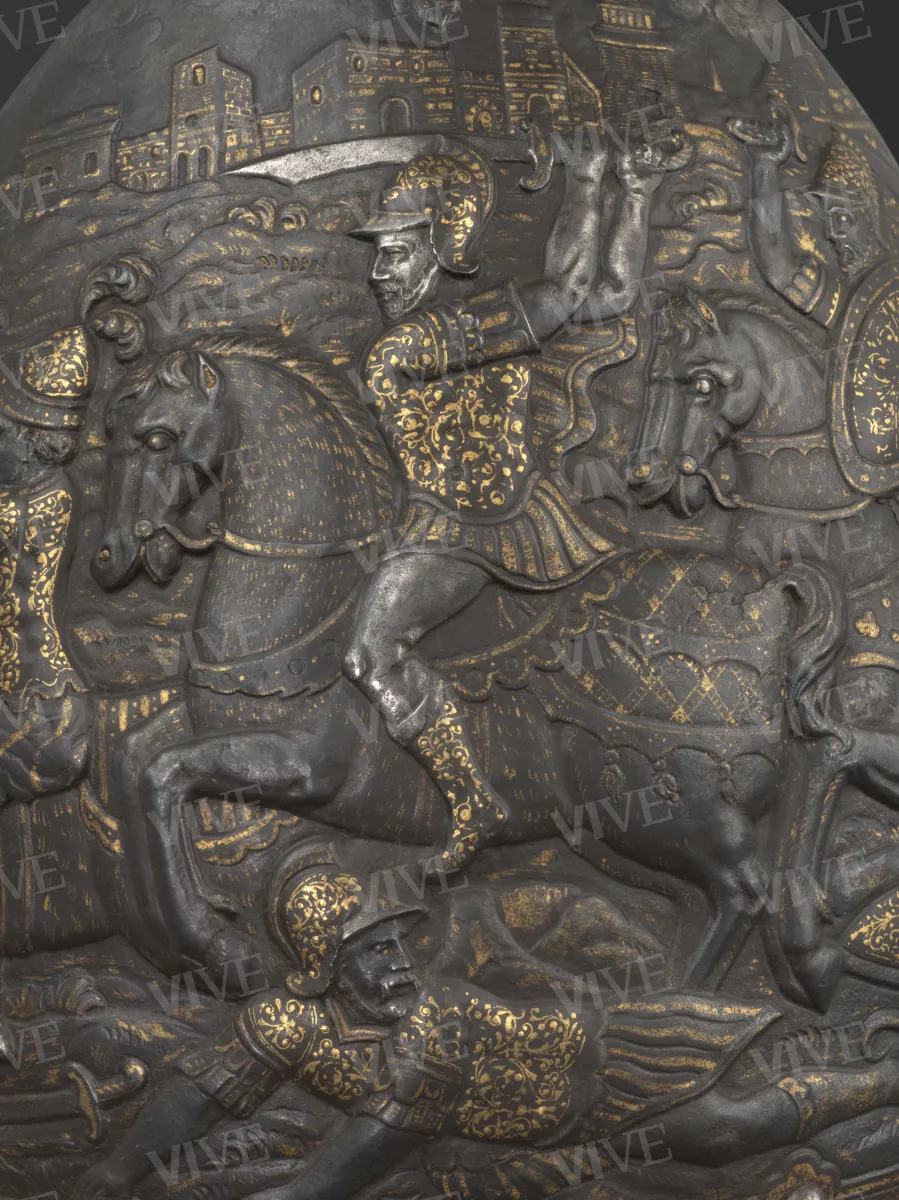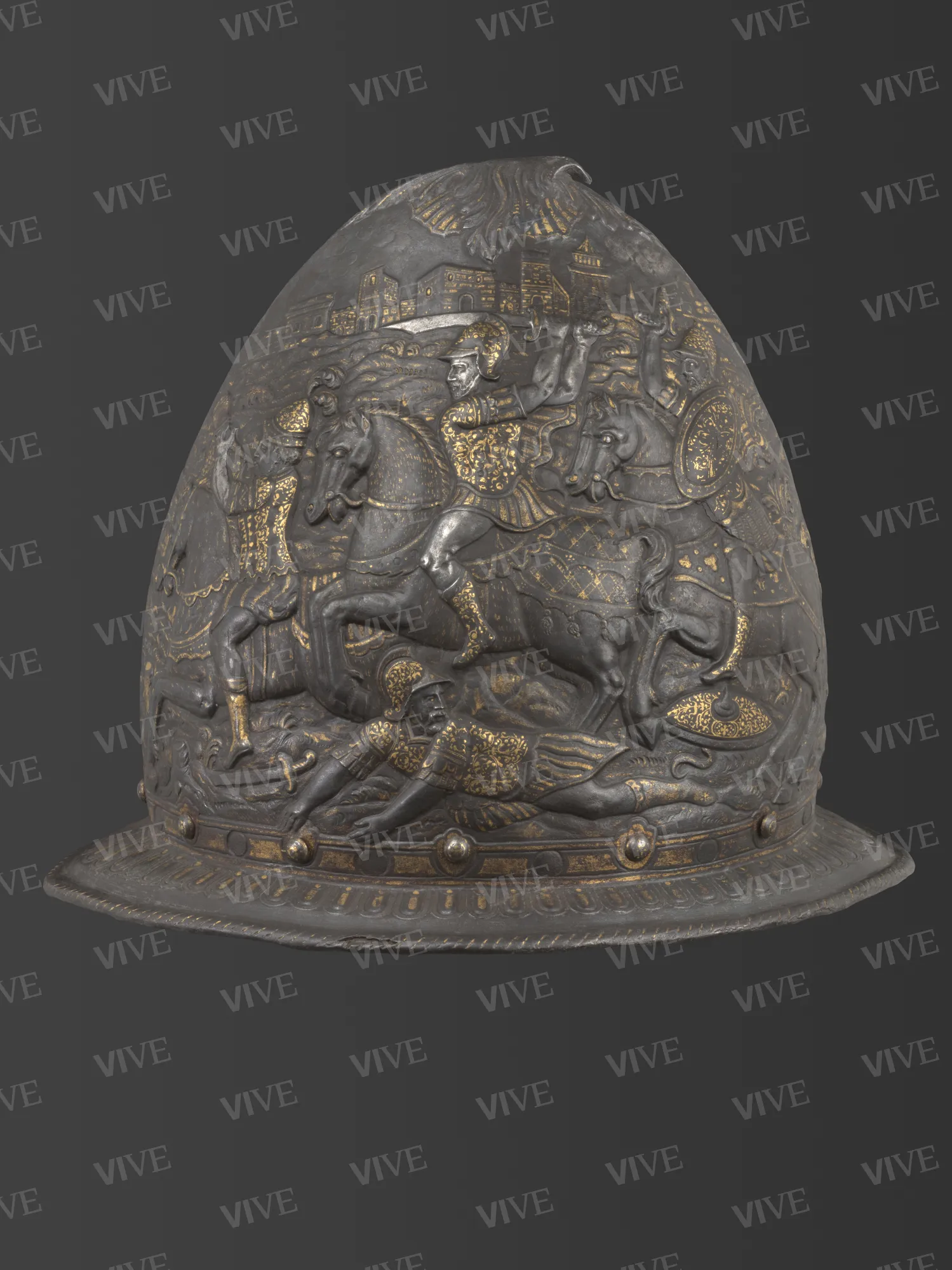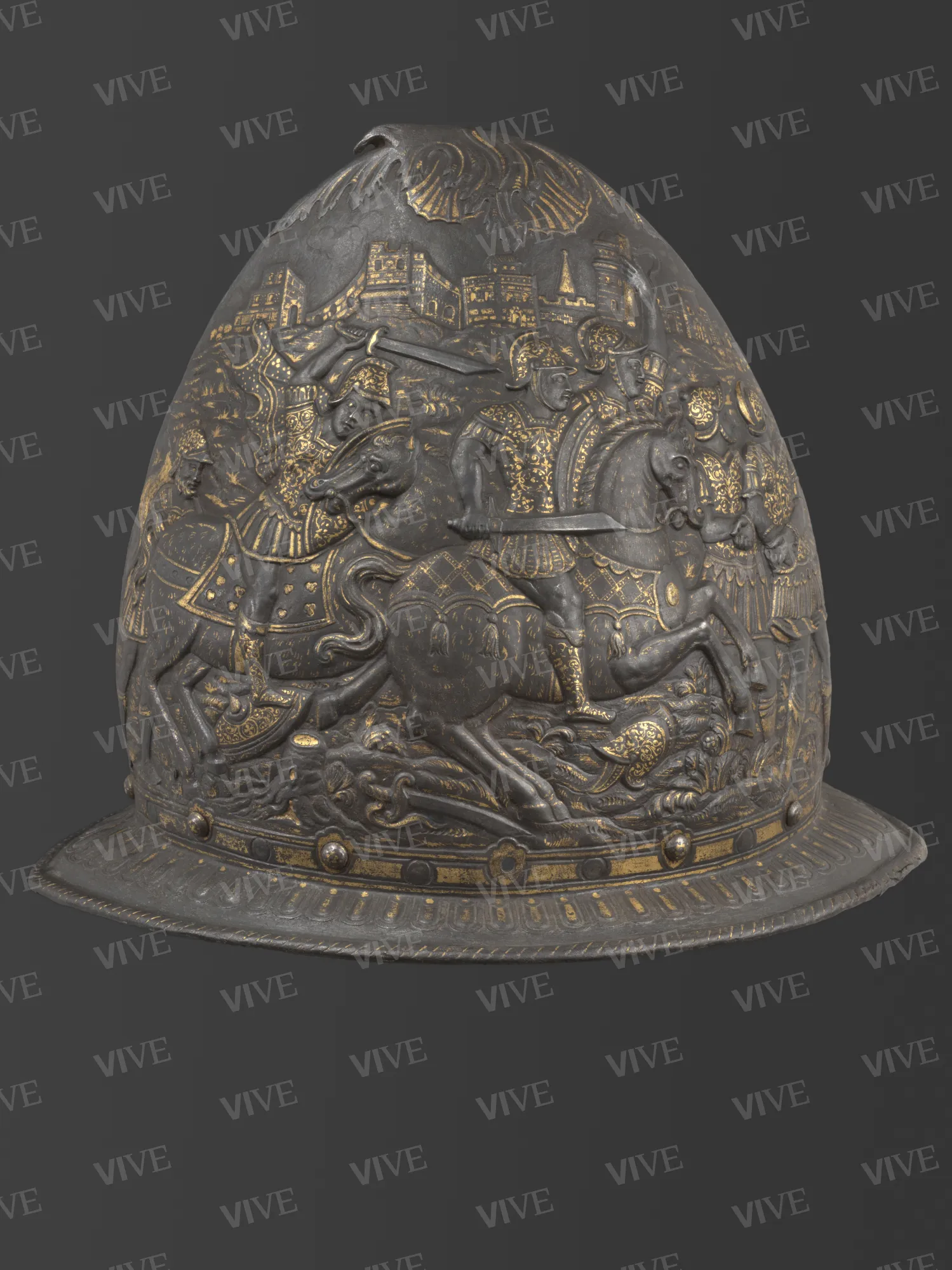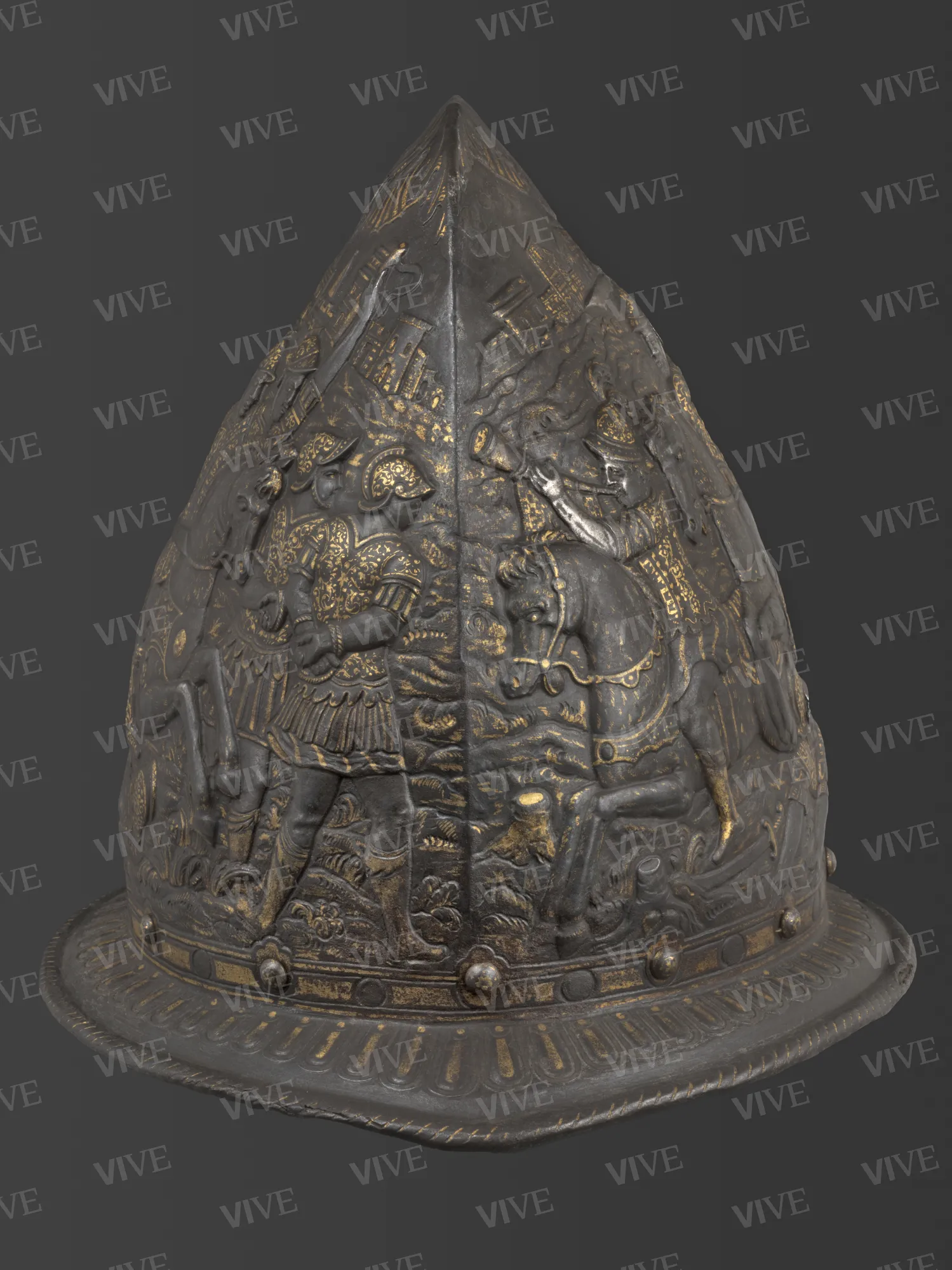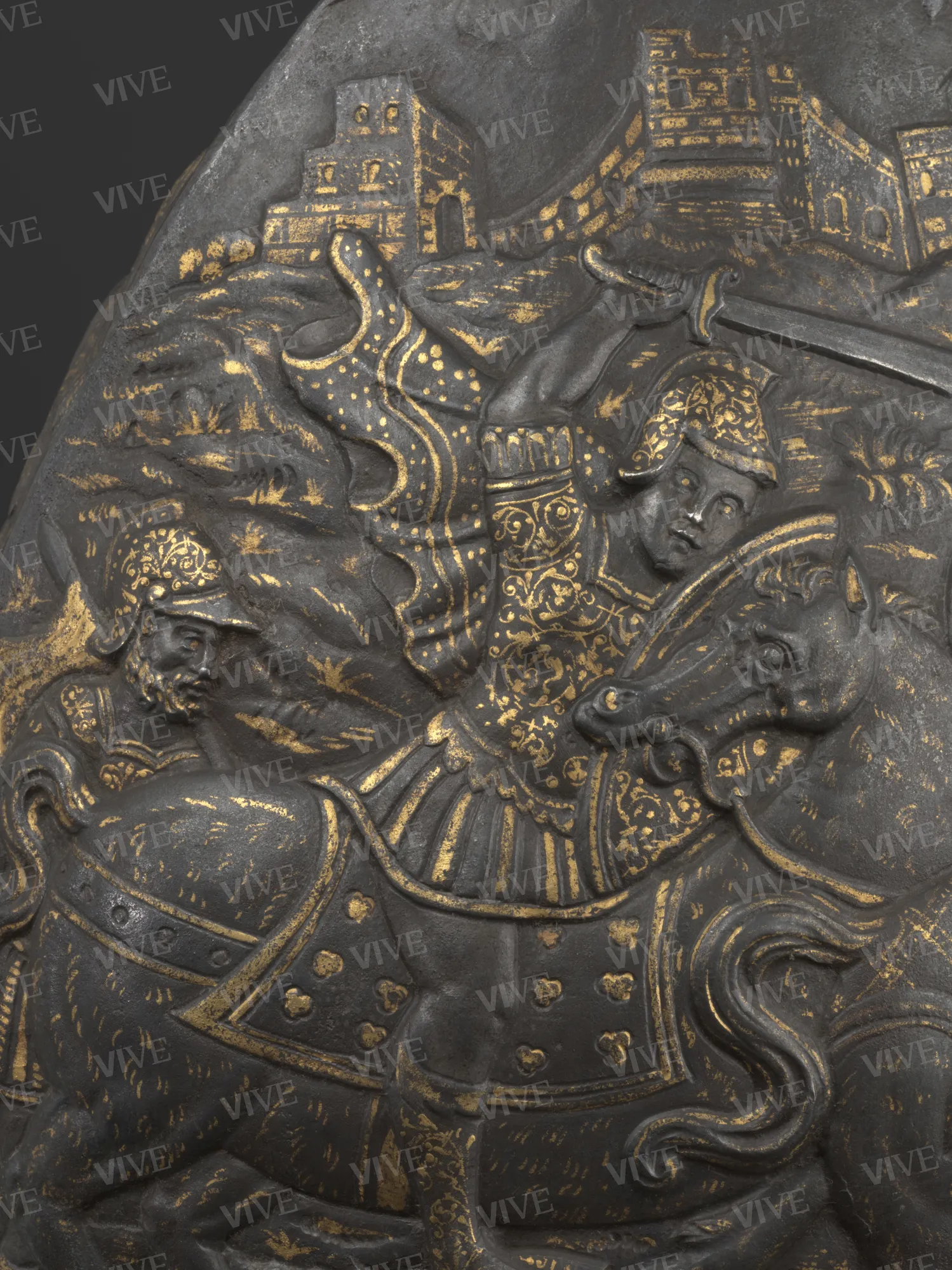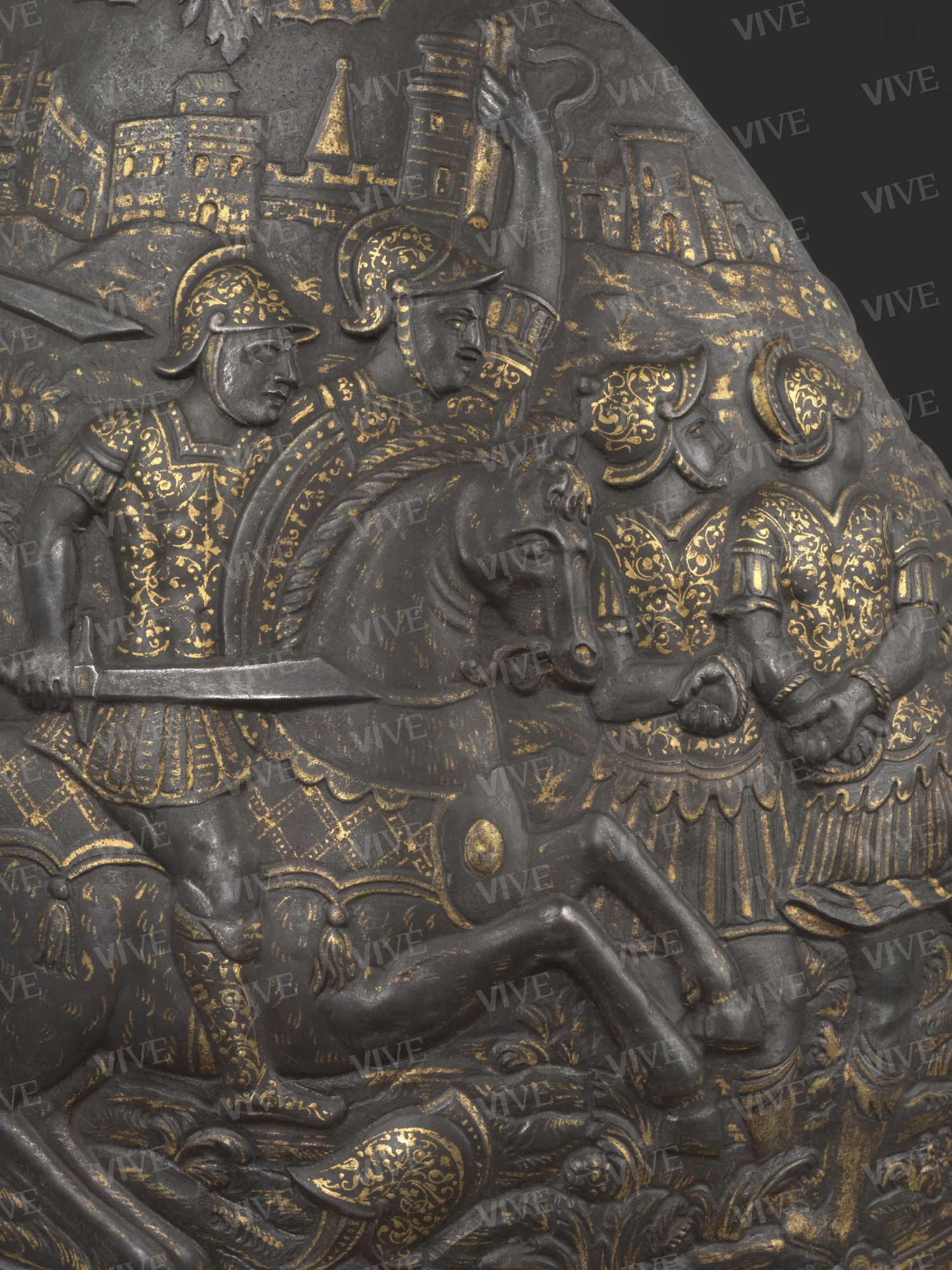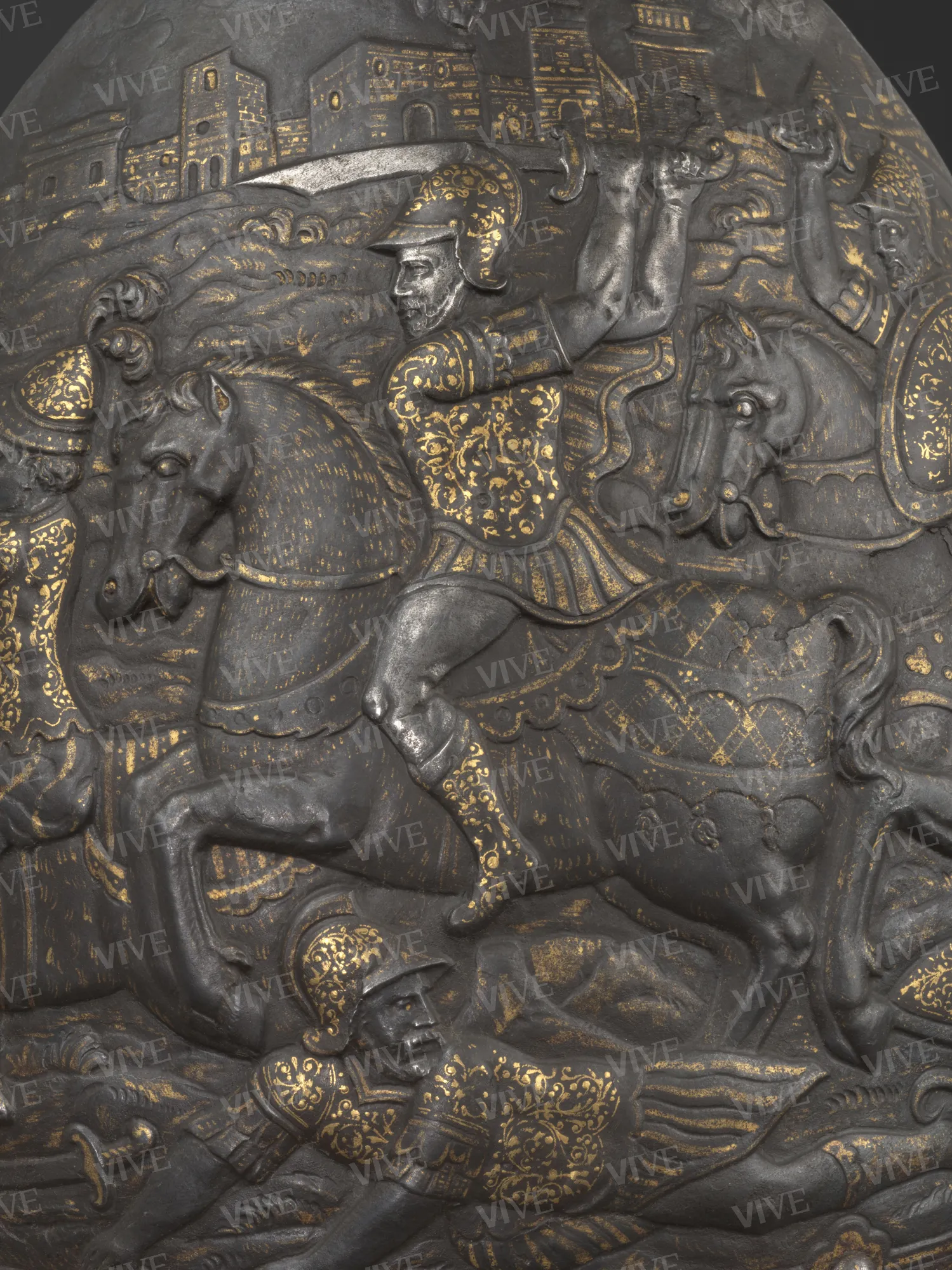Close-fitting helmet
Milanese production 1570–1580
This close-fitting helment is of the pointed type, characterized by the top appendage that distinguishes this type. It is ribbed lengthwise and has a short brim embossed with pods. The surface of the cap is embossed with a battle scene featuring knights and infantrymen armed in ancient style, against a backdrop of a fortified city. All surfaces are patinated with gold damascene details, while the weapons and flesh tones are damascene in silver.
This close-fitting helment is of the pointed type, characterized by the top appendage that distinguishes this type. It is ribbed lengthwise and has a short brim embossed with pods. The surface of the cap is embossed with a battle scene featuring knights and infantrymen armed in ancient style, against a backdrop of a fortified city. All surfaces are patinated with gold damascene details, while the weapons and flesh tones are damascene in silver.
Details of work
Catalog entry
The scene depicted is rather generic: on one side, a knight calls for a charge by blowing a horn, followed by other knights wielding swords, who in their impetus overwhelm other warriors on the ground; on the other side, infantrymen and other knights armed in the same way face the first group. Shields, swords, and helmets lie at the feet of the warriors, while in the background a city with towers, walls, and fortifications stands on a hill. Di Carpegna (di Carpegna 1969, 16) argues that this type of helmet is a lower-quality product than the decorative ones that appeared in the sixth and seventh decades of the sixteenth century, originating in Milanese workshops and enjoying widespread success in courts throughout Europe. Scalini (Scalini 2018, 111) notes that, following studies carried out for the exhibition Parate trionfali, held in Geneva and Milan in 2003, it was understood that this type of artifact can be divided into high-quality examples, with prestigious commissions and made according to elaborate designs, and others produced in series featuring generic themes not attributable to specific characters, as in the case under consideration. Scalini (Scalini 2018, 111) also notes that stylistically this skullcap can be compared to the part of a saddle signed by Lucio Marliani, known as Piccinino, and Gerolamo Assi, now in Krakow in the Muzeum Narodowe (Czartoryski Collection, inv. XIV-412). But the setting of the scenes across the entire panel with foliage covering the top is also found in the example with Muzio Scevola preserved at the Metropolitan Museum in New York (14.25.620) and in the one that is part of the harness for Francesco I de’ Medici kept at the Bargello in Florence (M 747), which can be attributed to the Piatti workshop active in Florence and probably in Milan.
Riccardo Franci
Entry published on 12 June 2025
State of conservation
Buono. Vecchie rotture con vecchie riparazioni al vertice del coppo, crepe e sfogliature al bordo della tesa. La damaschinatura d'argento di armi e incarnati è molto consumata.
Provenance
Collezione Odescalchi, 1959;
Roma, Museo Nazionale di Palazzo Venezia, June 30, 1959.
Exhibition history
Rome, Museo Nazionale di Palazzo Venezia, Antiche armi dal sec. IX al XVIII. Già Collezione Odescalchi, May–July 1969;
Rome, Museo Nazionale di Castel Sant’Angelo; Roma, Museo Nazionale di Palazzo Venezia, Armi e potere nell’Europa del Rinascimento, July 26–November 11, 2018.
References
di Carpegna Nolfo (a cura di), Antiche armi dal sec. IX al XVIII. Già Collezione Odescalchi, catalogo della mostra (Roma, Museo Nazionale di Palazzo Venezia, maggio-luglio 1969), con schede a cura del curatore, Roma 1969, p. 16, n. 70;
di Carpegna Nolfo, Le armi Odescalchi, Roma 1976, p. 16;
Scalini, in Scalini Mario (a cura di), Armi e potere nell’Europa del Rinascimento, catalogo della mostra (Roma, Museo Nazionale di Castel Sant’Angelo; Roma, Museo Nazionale di Palazzo Venezia, 26 luglio-11 novembre 2018), Cinisello Balsamo 2018, p. 111, n. III.12.

